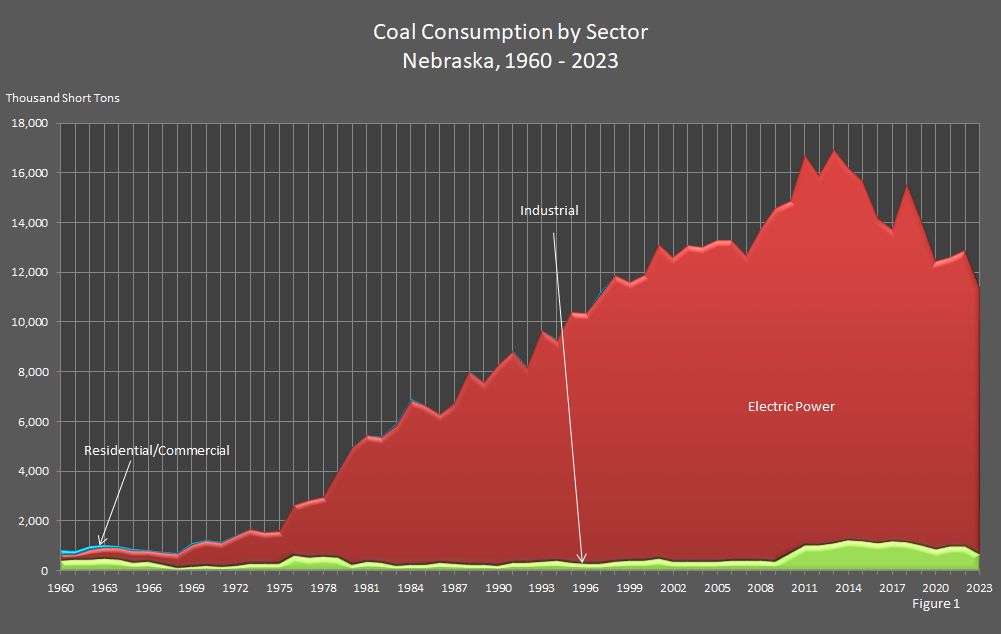Coal Consumption
Nebraska used 11,373 thousand (11.4 million) short tons of coal in 2023, a decrease of 11.9 percent from 2022. Figure 1 shows that coal used for electricity generation accounted for nearly all (94.1 percent) of the consumption with 5.9 percent consumed in the industrial sector. Any coal consumption in the commercial, transportation, and residential sectors was small enough to round to zero in this table.

| Attachment | Size |
|---|---|
| 2020 - 2023 | 64.71 KB |
| 2000 - 2019 | 132.21 KB |
| 1980 - 1999 | 140.05 KB |
| 1960 - 1979 | 127.99 KB |
Sources: State Energy Data Report. Energy Information Administration, Washington, DC. Nebraska Department of Water, Energy, and Environment, Lincoln, NE.
Notes: Totals may not equal the sum of the components due to independent rounding.
* For 1997, the Energy Information Administration numbers show 105 for the commercial sector, 296 for the industrial sector, and 13 for the residential sector when all three numbers should have been allocated to the industrial sector.
